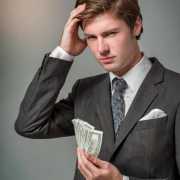Preserving cash flow: more than ever the sinews of war
In these turbulent times, the control and monitoring of your cash flow are essential to ensure the sustainability of your company and to avoid defaulting on payments. When we talk about cash flow, we think of WCR (Working Capital Requirement). But what exactly are we talking about? It can be defined simply as the financing need resulting from the gap between cash inflows (receipts) and cash outflows (disbursements). In short, keeping your WCR low is essential to maintaining a healthy cash flow.
Levers of action:
- How to optimize your procurement strategy?
- Inventory management: the first steps towards a healthy cash flow
- How to relieve your cash flow by automating your business processes?
- The solvency study: When? When? Why? How do we do it?
- Unpaid invoices and customer reminders: what can be done about it?
- What are the tools and solutions for collecting unpaid bills?
How to optimize your procurement strategy?
Without a doubt, procurement is a key element in optimizing working capital.
First, you can work to reduce your production lead times to limit the number of products and components in stock but not yet available for sale. This involves several things: ensuring the availability of components for your products, speeding up production processes to reduce WIP, and scheduling production as efficiently as possible to increase efficiency.
In addition, do not hesitate to maintain close relationships with your suppliers. Look for ways to optimize your collaboration to shorten lead times. In this perspective, you can also consider finding suppliers who are geographically closer. In this case, it is advisable to make sure beforehand of their reliability and solvency. For this, you have solutions like LegalCity which allow you to identify, quickly and for free, the financial situation of your supplier.
Always with the objective of reducing your working capital, you must pay particular attention to your purchases to enable you to find a good balance between acquisition costs and holding costs. The art of replenishing with the "right quantity". To do this, you can calculate the EOQ or Economic Order Quantity.
Finally, keeping a good control of your stock requires to set indicators and alerts that will help you to pilot your activity efficiently. The calculation of the order point can help you. It corresponds to the stock level from which your company must restock. Inventory management solutions such as Erplainallow you to define order points for each product and send you an alert when they are reached. The reorder point method allows you to keep a minimum stock level to continue to meet the demand during the replenishment period.
In general, aim for a just-in-time inventory management model. This will reduce your WCR by avoiding prolonging the storage period of your items. In some cases, you can even consider dropshipping, which consists of having your customers deliver directly from your supplier.
Inventory management: the first steps towards a healthy cash flow
When you look at the formula for calculating WCR, you can see that inventories are an integral part of the quality of your cash flow. Indeed, the WCR = average outstanding trade receivables + average inventory - average outstanding trade payables. Several solutions exist to optimize inventory management and reduce its impact on cash flow.
- Avoid overstocking. Overstocking has a negative impact on working capital for several reasons: it ties up capital, increases financing requirements and can frequently lead to obsolescence of the goods stored. Finally, it contributes to reducing your margin if you end up selling the surplus at a reduced price.
- Encourage fasterinventory turns. This is another key element that a company can act upon to preserve cash flow and minimize costs. As a reminder, it is the number of times you turn over your inventory during a given period. To calculate it: Sales/ Average stock (selling price)
Accelerating this rotation requires good supply management (see above) but also an improved sales cycle. Indeed, optimizing the steps of the sales process as soon as the order is received contributes to a faster delivery of your merchandise and therefore a reduced time spent in your storage facilities. Furthermore, your product portfolio requires segmentation and differentiated follow-up. According to pareto's law, 20% of the items in stock constitute 80% of the value of your inventory. It is therefore these 20% that you should pay special attention to and avoid that they linger too long in your warehouses.
- Reduce Dormant Inventory. By analyzing your inventory, you can identify unsold products that weigh heavily on your cash flow and prevent you from having the necessary cash to reinvest in the purchase of new products. You should then seek to sell these products through promotional offers, kits or packs or even destocking solutions.
- Make sure you have real-time visibility of your inventory to accurately track all your merchandise. A software like Erplain offers an inventory report for each of your warehouses.
How to relieve your cash flow by automating your business processes?
Who hasn't made mistakes or wasted considerable time with the laborious use of Excel spreadsheets? Many small businesses are still regularly observed doing manual sales entry. The repetitiveness of recording similar data from one document to another leads to mistakes.
These errors are detrimental to the proper processing of orders and also to the relationship with customers! A scenario that strongly favors unpaid invoices. To avoid finding yourself in this situation, it is best to equip yourself with a sales cycle automation solution. The Erplain software, for example, allows you to generate all your sales documents and to transform your quotes into purchase orders and invoices in one click. Erplain also provides you with real-time monitoring of all your activity and permanent surveillance of customer invoices to be paid and dunned. However, an unpaid invoice is always waiting for you even if you have taken all your precautions. You will then find advice and all the steps to follow to deal with them efficiently.
There is an element that companies must know before signing any contract with a customer to anticipate the risk of non-payment: it is the Company solvency check. Managing cash flow and unpaid invoices by checking the financial solvency of a company: an inexpensive and effective precaution!
The solvency study: When? When? Why? How do we do it?
The creditworthiness study:
This study of your suppliers or business partners allows you to prevent unpaid invoices and is a highly recommended process. The purpose of this study is to validate the good financial health of those you monitor. The evolution of the credit risk is an indicator that must be assiduously monitored because it allows you to estimate the corporate solvency of your main suppliers, partners or potential strategic partners.
Analyzing corporate solvency: how to get started...
Creditworthiness can be measured by several indicators such as:
- Total debt / Total balance sheet : If the ratio obtained is higher than 1, then the company will be considered in serious difficulty or bankruptcy.
- Assets - Liabilities : If the result is positive, the client is solvent.
- CAF = Net debt / EBITDA (Gross Operating Income): This ratio allows to make an estimation on the capacity of repayment of the debts.
- EBITDA / Loan and lease payments : The higher the result, the more the company is able to increase its debts and resort to loans. This is a rate used by credit organizations.
- Revenue growth, industry data, data on company - payment habits.
- Compliance with the obligation to publish accounts
This information is sufficient to measure the financial risk and to establish the credit report and the company scoring. LegalCity, in collaboration with CREDIT SAFE, the leader in financial information, puts a solvency service at your disposal. This allows you to know the scoring and the financial situation of more than 14 million French companies.
The information can be obtained individually or in packages on the Legalcity website. Even with these precautions, you may have difficulty collecting your bills. No need to worry! There are effective solutions to deal with them!
Unpaid invoices and customer reminders: what can be done about it?
The customers of SMEs and self-employed are mainly customers with whom privileged relationships have been established. Today, 1/3 of the companies created will risk to file for bankruptcy in 3 years because they will have had difficulties to be paid their invoices by their customers. Here are some precious advices proposed by LegalCity allowing you to manage at best the payment cycle in order to improve your cash flow with an efficient customer reminder:
- Be attentive and present for your customers
- A written reminder: This is a factual letter that will include the details of the unpaid debts so that the debtor has a clear vision. While remaining courteous, if your general terms and conditions specify it, you may be able to apply late payment penalties of 40 Euros per overdue invoice, as also specified by the LME Law in its article L 441-6 of the Commercial CodeAfter this first letter,you will be able to send, if necessary, a warning letter (LRAR) in which you will indicate a date of regularization to respect. It is important to note that the recourse to a Cabinet is to be privileged because the recourse to the bailiff can have a negative effect on your future commercial relations.
- The letter of formal notice: This is a letter containing a certain amount of information and legal references such as :
- The title of the registered letter must be clearly marked "LETTER OF WARNING";
- A deadline for payment;
- A clear explanation of the purpose of the unpaid bill and/or service;
- The date of the mailing of the letter;
- Your address and the address of your debtor's legal entity;
- The signature of the person with authority to act;
- The name of the competent court in case of a legal action;
An advice: do not take the first model of letter on line for your letter of demand and check that it respects the texts of Law in force under penalty of cancellation.
What are the tools and solutions for collecting unpaid bills?
Banking tools:
There are a number of banking tools and mechanisms available to assist in the financing and collection of trade receivables.
- The factoring: It is a tool allowing to advance the payment of the receivables of the customer item proposed by the factoring companies and the banking sector. It consists in obtaining an advance financing and subcontracting the collection to the factoring company. The Factoring Company is remunerated on the advance paid and charges management fees which should be looked at closely when signing.
- The overdraft facility, which is an overdraft permission granted by the bank. This cash credit allows the company to manage its immediate expenses and its deferred earnings in a more flexible way. It allows to anticipate part of the impact of the inter-company credit and the payment delays of the customers.
- Credit insurance is a tool that allows you to protect yourself against the risk of non-payment and to pass on the risk of non-payment to an insurer. The insurer undertakes, in return for the payment of a commission, to pay on the due date the company which would be victim of an unpaid invoice previously entrusted. The credit insurer grants a credit limit for a given customer and undertakes to bear the cost with the customer in case of non-payment. The credit insurer will then take care of all the steps to recover the invoice(s) from the debtor. Credit insurers will always be cautious about granting a credit limit when your client has social accounts that show weaknesses or difficulties
- Discounting represents an advance of cash before maturity. Reverse factoring is a financing solution that is currently gaining momentum. Reverse factoring is set up at the initiative of the customer who allows his suppliers to easily finance their receivables with the help of a factoring company.
These banking tools have a common goal: to prevent and collect receivables on or after their due date. A recent study conducted by Forrester Consulting for the payment solution operator GO-Cardless indicates that companies spend on average more than 15% of their turnover on debt management alone. It appears then, that another way, more economic and very effective, exists by the action of the debt collection firms.
Debt collection:
Whether you are an entrepreneur, a founder of a small business or an employee of a large corporation, an unpaid invoice can affect your business. If you are confronted with this situation, you will have to find a solution to recover the amount due. In most cases, you will have to start a debt collection procedure, which includes several steps to be taken in order to obtain the payment of the debt. Debt collection is a regulated activity that consists of using dialogue to obtain payment from a debtor. There are different collection procedures:
- Amicable collection
Amicable debt collection is the most recommended procedure because it has a double advantage: it privileges your customer relations and avoids a lawsuit. This service offered by debt collection agencies was often accessible to large companies. Small and medium-sized companies could not find a suitable solution. That's why LegalCity, an online debt collection agency, offers a 100% digitalized debt collection service accessible to small and medium-sized businesses and self-employed people who can benefit from the same services offered by debt collection agencies.
LegalCity favors amicable collection and accompanies its clients throughout the procedures and ensures a follow-up by agents specialized in these fields. Clients can access their online space and be offered adapted solutions to collect their outstanding debts and customer reminders.
LegalCity's experience highlights the fact that it is better to collect debts out of court before taking legal action. The use of a collection agency will allow you to save on the cost of legal proceedings that you cannot control.
The intervention of a specialized and professional firm will change your debtor's attitude. The LegalCity online application provides you with tools and agents specialized on these issues allowing you to save time on the payment of your unpaid bills.
Conclusion
Today, more than ever, companies must be diligent about monitoring their finances to ensure their prosperity. Preserving your cash flow and optimizing your WCR is essential and this can be done through the use of numerous online tools and software. There is a considerable advantage to using these different fully digitalized software as they allow the integration of accounting API, invoicing, collections, procurement and inventory management. Several tools that will save you time, and allow you to preserve and optimize your cash flow.











very good article. personally, the payment delays of my customers often put the treasury in difficulty if they have not proposed the discount. factoring can be a solution